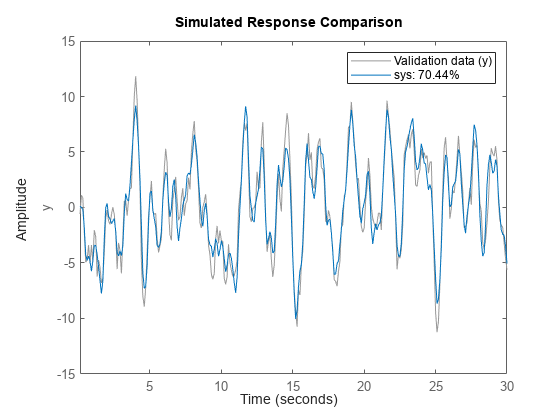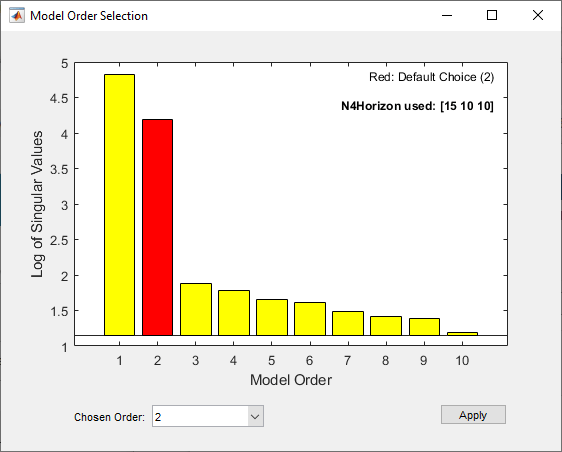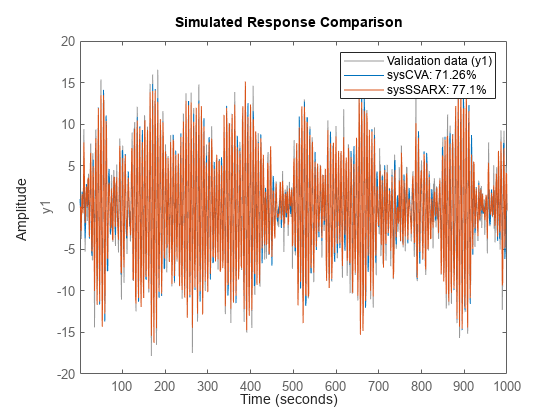n4sid
時間領域または周波数領域のデータを使用した部分空間法による状態空間モデルの推定
構文
説明
状態空間モデルの推定
sys = n4sid(tt,nx)tt のすべての入力信号と出力信号を使用して、次数 nx の離散時間状態空間モデル sys を推定します。
sys は次の形式のモデルです。
A、B、C、D、および K は状態空間行列です。u(t) は入力、y(t) は出力、e(t) は外乱、x(t) は nx 個の状態のベクトルです。
A、B、C、および K のエントリは、既定ではすべて推定可能な自由パラメーターです。動的システムの場合、D は既定ではゼロに固定されます。これは、システムに直達がないことを意味します。静的システム (nx = 0) の場合、D は既定では推定可能なパラメーターです。
この構文は SISO および MISO システムに使用できます。この関数では、timetable の最後の変数は単一の出力信号であると仮定します。この構文を使用して、tt に唯一の出力を表す単一の変数が含まれる場合に時系列モデルを推定することもできます。
MIMO システムの場合や、推定に使用する予定の変数よりも多くの変数が含まれる timetable の場合、名前と値の引数を使用して、必要な入力チャネルと出力チャネルの名前を指定する必要もあります。詳細については、tt を参照してください。
連続時間モデルを推定するには、名前と値の構文を使用して 'Ts' を 0 に設定します。
追加のオプションの指定
sys = n4sid(___,Name,Value)'Ts' を 0 と指定します。A、B、C、D、および K の各行列の既定の動作を変更するには、名前と値のペアの引数 'Form'、'Feedthrough'、'DisturbanceModel' を使用します。
この構文では、前述の任意の入力引数の組み合わせで使用できます。
例
入力引数
名前と値の引数
出力引数
参照
[1] Ljung, L. System Identification: Theory for the User, Appendix 4A, Second Edition, pp. 132–134. Upper Saddle River, NJ: Prentice Hall PTR, 1999.
[2] van Overschee, P., and B. De Moor. Subspace Identification of Linear Systems: Theory, Implementation, Applications. Springer Publishing: 1996.
[3] Verhaegen, M. "Identification of the deterministic part of MIMO state space models." Automatica, 1994, Vol. 30, pp. 61–74.
[4] Larimore, W.E. "Canonical variate analysis in identification, filtering and adaptive control." Proceedings of the 29th IEEE Conference on Decision and Control, 1990, pp. 596–604.
[5] McKelvey, T., H. Akcay, and L. Ljung. "Subspace-based multivariable system identification from frequency response data." IEEE Transactions on Automatic Control, 1996, Vol. 41, pp. 960–979.


